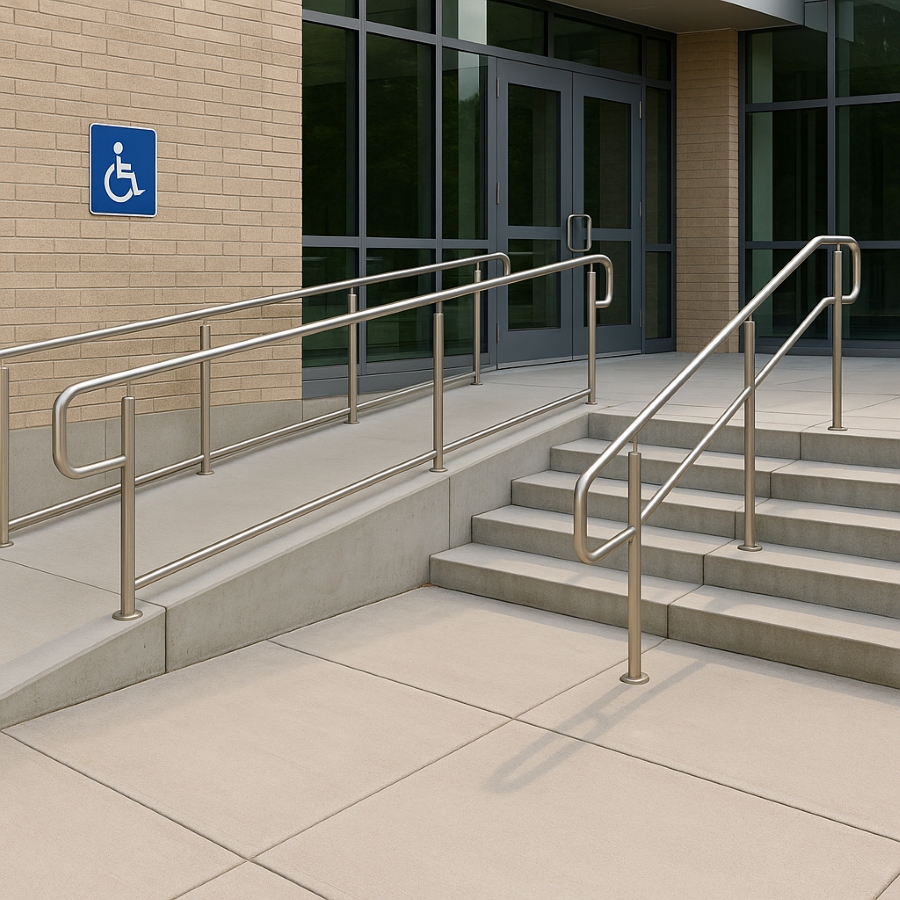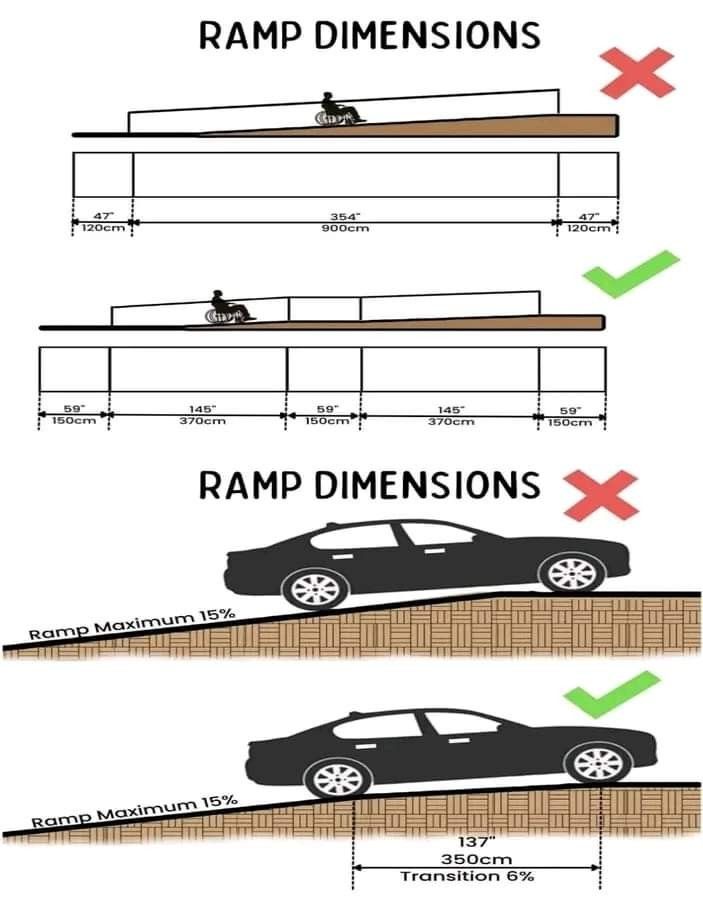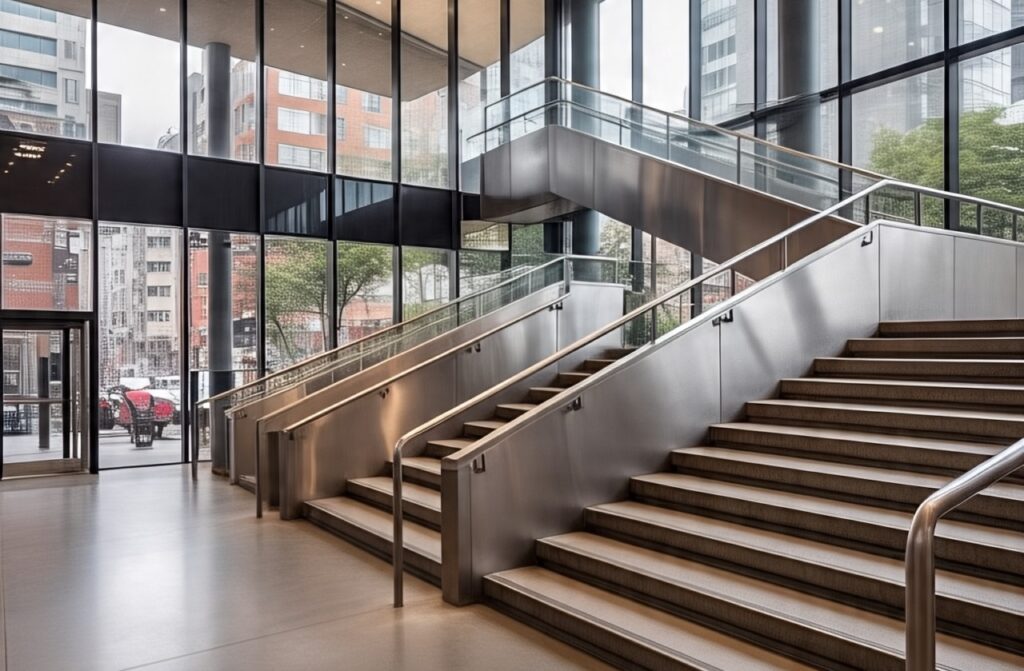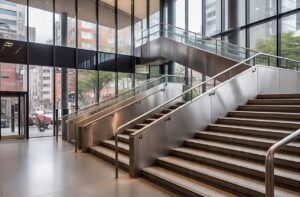When designing public buildings, it is essential to prioritise both functionality and accessibility. Ramps and stairs are not structures of buildings; they are significant details that influence the mode of movement of individuals in a space. By facilitating convenient mobility for the disabled and safe and effective vertical transportation of all individuals, well-designed ramps and stairs are the solution to effective public architecture.
Safety is a very essential factor in design, and provision should be made for accessible spaces that are comfortably usable by all. Ramps and staircases are vital in the compliance of accessibility, especially in schools, hospitals, and public buildings.

Definition of a staircase and ramp
Staircase
Staircases are an essential element of family and public houses, facilitating safe, economical, and accessible vertical movement between floors. A staircase is a vertical link between various levels within a complex or building. It usually consists of treads, risers, handrails, and support material like stringers or balustrades.
Ramp
A ramp refers to a sloping plane that joins two different levels and provides an easy and smooth means of traversing between the two. Ramps lack steps, in contrast to staircases, and are meant for the use of wheelchairs, buggies, trolleys, cycles, and mobility-handicapped people.
Why Ramps and Staircases are Significant in Public Design.
Ramps and stairways are more than just routes; they are fundamental design elements that play an amazing role in the interaction of the public with public space. Whether or not they exist, where they are located, and how they are built directly affect accessibility, safety, circulation, and overall user satisfaction. As such, ramps and stairways must form usable and inclusive spaces.
The following are some reasons why ramps and staircases play a significant part in public designs:

1. It makes access possible for all.
Ramps are convenient access to public amenities for the disabled, elderly, parents with babies in prams, and delivery personnel. Stairs offer a straightforward and effective pathway for others, and they are able to serve the interests of various stakeholders. With the integration of the two elements, architects can guarantee that everyone will be in a position to move through an environment.
2. It improves security and exit paths during emergencies.
Staircases, especially in public buildings, are essential methods of evacuation during emergencies such as fire or loss of electricity. In good design, they provide quick and safe evacuation. Ramps are also for people who are disabled or unable to use stairs, hence offering a method for daily use as well as emergencies.
3. Enabling Easy Movement
For public structures, ramps and staircases are crucial aspects in facilitating effortless navigation in terms of facilitating individuals’ access to areas without obstruction and efficiently. They facilitate the timely progression of individuals, reduce congestion, and allow unobstructed change of levels between various points of the building. Properly designed, they cater to the massive scale of users. Their impact enhances the overall usability and accessibility of the area, rendering it user-friendly and well-arranged for daily use.
4. Adherence to Legal and Ethical Specifications
The building codes and disability laws, like the Nigerian National Building Code and the international standards, call for public places to be accessible for all, including the disabled. It provides safe and accessible access by way of ramps and stairs. It ensures compliance with such specifications.
Accessibility design guarantees equality, dignity, and respect for everyone. It is a practice of social responsibility and human-centered design—no one is left out based on physical disability or mobility impairment.
5. Contributing towards Aesthetic and Functional Design
When properly integrated into building design, staircases and ramps contribute form and function through the introduction of structure, rhythm, and the use of movement within space. The location, lighting, railings, and materials can be tailored according to the building style, whether it is traditional, minimalist, or modern. Functionally, they provide convenience in inter-level movement through continuity, spatial wayfinding improvement, as well as universal accessibility.
Common Design Mistakes in Staircases and Ramps and How to Avoid Them.
Designing staircases and ramps for public buildings should be carried out with great respect for accessibility as well as safety.
The most common mistakes and guidelines on how not to make mistakes when designing ramps and staircases are the following:
1. Inaccurate Slope on Ramps
The most common issue is a sloping ramp that is not sloping gradually. But the ideal slope ratio of a ramp should be 1:12 (5 degrees), i.e., for every 1 unit rise, the ramp should be 12 units horizontal. That is, if you have a 1-meter rise, the ramp would have to be 12 meters long so that the slope would be soft and easy to manage.
The greater than 5° slope makes ramps difficult and hazardous to use by people with mobility impairments, such as wheelchair users or elderly persons.

An appropriately designed slope ratio for a ramp will have all users travel using the ramp, it prevents user fatigue, it addresses safety concerns, etc.
2. Inadequate Landing Spaces
A landing is a flat, horizontal surface at the top, bottom, or between ramps and stairs flights. Poorly designed spaces or insufficient landing spaces are disturbing, pose safety risks, and hinder accessibility. Landings are important, however, in the building because they provide a smooth transition movement and enhance accessibility to everyone. It also serves emergency path and assists universal design and convenience.
3. Insufficient Width
It is totally important to give priority to making the width of ramps or staircases, especially in public spaces. It is not just a question of space but also a deciding factor in determining accessibility, safety, and user convenience. Narrow ramps and staircases cause restrictive moving spaces and issue-ridden ramps and staircases, and are inconvenient for people with disabilities, parents with a pram, and any user who requires extra space to navigate freely.
4. Poor Lighting
There must be a natural light feature, like a window, designed for the ramps and stairs. This will make it less likely for the users to slip or tumble from the building.
5. Lack of Clear Signage
Effective, appropriately placed signage not only increases safety and wayfinding but also delivers an efficient, hassle-free experience for all users, making it a critical component of accessible public design.
CONCLUSION.
Public building ramp and staircase designs are not building specifications alone. They are powerfully effective tools in the realisation of accessibility, safety, and usability. Prioritizing proper design of ramps and staircases in public buildings ensures inclusivity and safety for all. A well-designed staircase brings order and direction. A well-designed ramp serves to bridge spaces both physically and metaphorically for those with all abilities.
For more information, please do well to come over or reach us today.




One comment
Beautifully written.